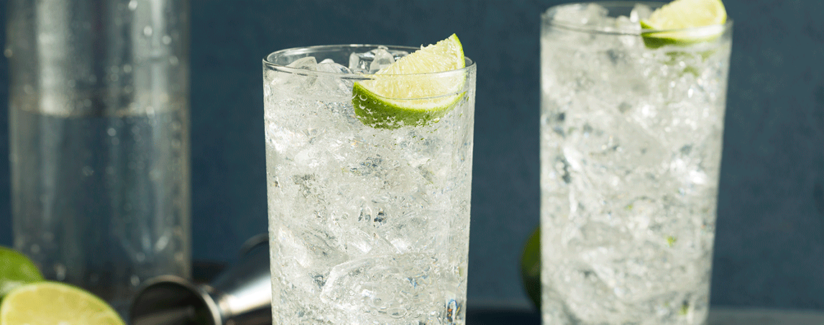
Tonic Water Contains Quinine
Quinine, an old-time cure for malaria, is available today in tonic water. We received a question from a reader asking about the safety of quinine, so we turned to Dr. Sean O’Keefe, professor in the Department of Food Science at the Polytechnic Institute and State University.
“Quinine is a very interesting compound that is long associated with foods and disease (malaria),” he said. “Quinine is a bitter compound extracted from the cinchona tree. Extracts from this tree have been used for malaria treatment for centuries. In fact, it is said that quinine is the first successful drug used to treat human infectious disease. Malaria parasites have become somewhat resistant to quinine, and better drugs have become available, yet it is sometimes still used today.”
The cinchona bark that contains quinine has a bitter taste. In the 1800s, British soldiers in India took a daily dose of quinine powder to prevent malaria. They dissolved the powder in water with a little sugar and soda to try to cover up the bitter flavor. Then, tonic water was bottled and shipped to tropical regions. To make the daily dose even more palatable, tonic water was mixed with alcohol and the iconic gin and tonic was born.
“Quinine today is used for its bittering properties in foods when a strong bitter component is desirable. Quinine is approved for use in carbonated beverages as a flavor additive, not to exceed 83 parts per million,” Dr. O’Keefe said.
Is it safe to consume quinine in tonic water?
“Levels people are getting from food are quite minor,” he explained. “High levels of quinine as used in medicine have side effects, but levels used as a bittering flavoring in beverages are quite low. For example, somebody drinking 0.5L of tonic water containing 83 ppm quinine will get 41.5 mgs of quinine (base). For malaria treatment, the CDC recommends 542 mg (as base) three times a day. This represents a 40 times difference, for somebody drinking 0.5L of tonic water flavored with the maximum level of quinine.”
Quinine was once prescribed to treat leg cramps and was even available over the counter. However, the FDA banned over-the-counter sales and advises against using it to treat leg cramps because of potential side effects. Dr. O’Keefe pointed us to research that determined vitamin E is as effective as quinine for treating leg cramps with much less toxicity risk.
“Given that quinine use can be fatal at high levels – it seems some people are particularly sensitive – and tocopherol (vitamin E) is as effective and well tolerated for leg cramps, I’d recommend people look into tocopherol instead of quinine. Again, it seems some people are particularly sensitive to it,” he said.
Those who are very sensitive may want to avoid tonic water, while others may find drinking tonic water helps relieve leg cramps. Dr. O’Keefe shared his personal experience with quinine.
“It is one of the more interesting natural components added to foods and one I do not worry about. After I came home from a malaria-prone part of Africa, I drank gin and tonics for a month or so just in case. (although as noted above, levels in tonic water are low and it probably had no effect),” he said.
Tonic water contains quinine and the drink was originally developed to treat for malaria. Tonic water available today still contains quinine at safe levels that are well below levels to treat disease.


























